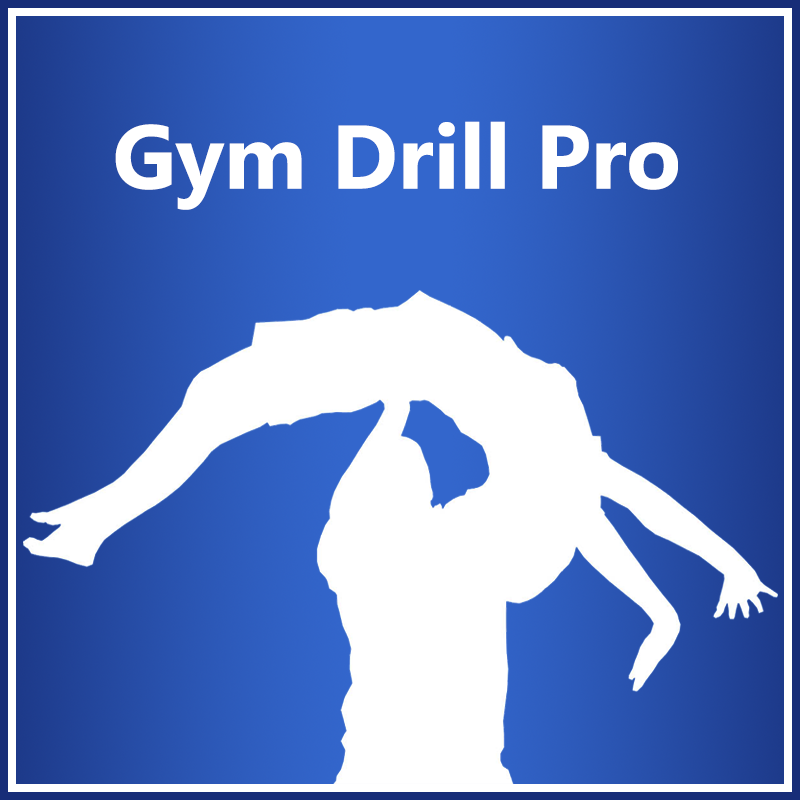

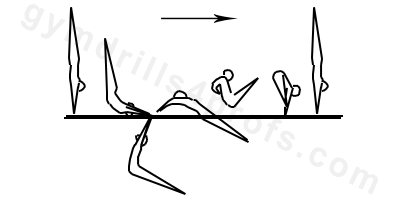
From a handstand, the gymnast should start the skill with a tight arch bail. Their shoulders should be extended with the body arched from the hips. Once the gymnast gets to roughly bar level, they should kick their legs forward into a pike position and pass through the lower point of the swing. They should keep the pike position to avoid touching the ground. Their shoulders should be open during this phase, with their head in the middle position. Next, the gymnast should open their hips and kick them upward for the final move of the reverse hecht swing. From their arms they should push back strongly on the rails. This will help them to reverse the swing and release upward. Once the gymnast is above the bars, they should open their legs and straddle, grabbing the bars in front of their legs. Following this skill is a press handstand in motion. The skill finishes in handstand.
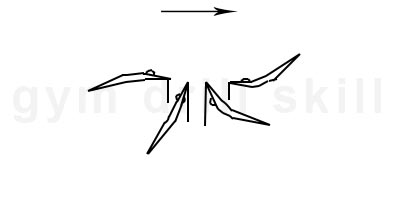
The most essential skill on the high bar is the swing. Almost every skill on this apparatus consists of a front or back swing. This is why it’s critical for the gymnast’s future career that they can correctly execute this element. The skill starts at the highest point in the backswing. Their body should be in a hollow position with their head neutral. At the bottom of the swing the gymnast should be slightly arched in order to whip and return to the hollow position in the front. There are a few modifications for the tap swing. The first is for flyaway. In this case, the gymnast should rap before reaching suspension. For a giant, the gymnast will need to accelerate the speed of their swing. This can be done by tapping slightly after the suspension. Regardless of the modification, after the tap the gymnast’s body should continue in a hollow position until the top of the front swing. After that follows the back swing. Until the bottom of the back swing the body should be exactly tight. After the suspension the body should begin to hollow to a slight pike, and the athlete shifts over their wrists. This helps them remain on the bar. The back swing finishes at the top of the move in a hollow position.
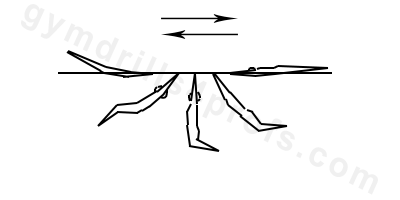
The long swing starts from the highest point of the backswing. The gymnast’s body should be straight and tight, so should their legs. Their head should be in the middle position. Down to the bottom of the swing, the gymnast should extend their shoulders and try to perform a “long” circle. Taller gymnasts may bend their legs from their knees. As they pass through the bottom of the swing, the athlete should shorten the radius of the circle. This can be done by kicking the knees and piking from the hips. Shortening the angle of the shoulders can help as well. The front swing finishes at the highest point. Next, the gymnast should perform a backswing and finish at the position of the skill.
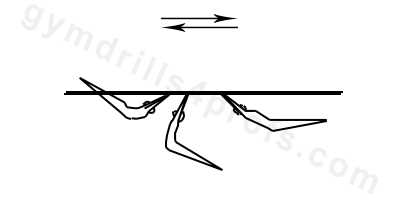
This drill starts at the highest point of the backswing. The gymnast should be in a tight arch position. Through the bottom of the front swing they should perform a strong whip and pass through in a piked position. They should gradually extend their body until the end of the uprise. In the back swing, they should pike from their hips and pass the suspension in a piked position. During the last phase of the backswing, the gymnast should open their body into a tight arch position.
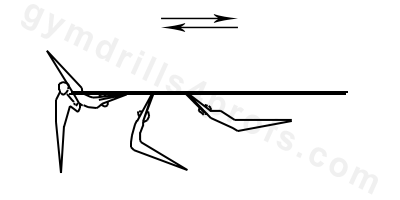
This drill is similar to the previous one. At the beginning of the swing, the coach should assist the gymnast to encourage them to arch more and to perform a higher backswing.
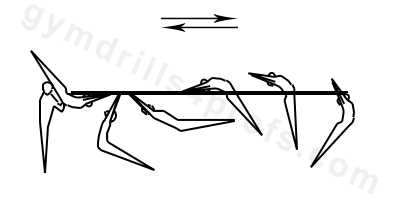
This drill is similar to the previous one. In the upward swing, the gymnast should push back strongly on the bars and at the same time, extend their shoulders and arch from their hips. If the push is correct, the gymnast should land on the floor in a support position.
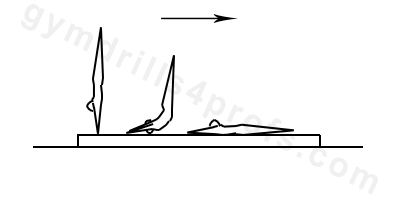
From a handstand, have the gymnast perform a “brush” - extend the shoulders and arch the body from the hips. They should land flat on a mat.
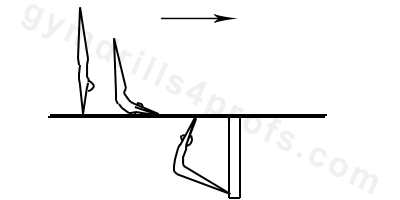
This drill helps the gymnast to improve the first part of their skill. Place a mat vertically underneath the parallel bars. This will be used to stop the gymnast through the bottom. When the gymnast performs the bail, they should finish the drill at the very bottom in a piked position, hitting the mat with their feet.
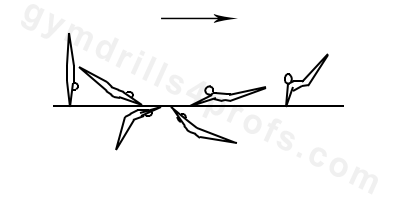
From a handstand the gymnast should start the skill by bailing down to the bottom of the swing. There are two modifications. The first one is to bail with an extended tight body, and around the level of the rails the gymnast should pike their body from the hips with tight legs. This helps to increase the speed, but after that the gymnast should conclude the reverse hecht move much faster. In the front swing, they should also push back on the rails much stronger. The second modification of the move starts with a tight arch bail, it compresses the body for the following whip and pike. In this case it’s easier to perform the skill because the acceleration is relatively moderate. This means that the subsequent push off the rails is not as strong. A potential problem with this method is that the gymnast can develop the wrong habit of “brushing” for the giant swings. At the very bottom of the swing, the gymnast should be in a piked position without touching the ground. They should have extended shoulders with their head in the middle position. Next, the gymnast should open their hips and kick them upward in the final move of the reverse hecht swing. Their arms should push back strongly on the rails. This helps to reverse the swing and to raise the athlete onto the bars in a low rear support position. The stronger the gymnast pushes on the rails, the lower the rear support is.
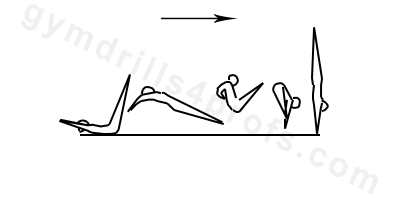
Start this drill on the trampoline with a backward roll. When the gymnast’s arms reach the trampoline, have them push back strongly on the trampoline in order to reverse the move. They should release, and in the flight flip forward into a straddle pike position. They should land with their hands on the trampoline. Next, they should raise their hips, open their shoulder angle, and finish the drill in a handstand. This move emphasizes on pushing back on the trampoline and reverse flipping forward. The stronger the gymnast’s push is, the higher their release will be
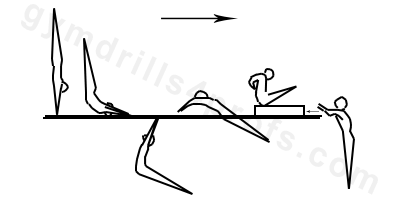
In this drill, the gymnast should perform all of the tippelt elements. When they are in the release phase, the spotter should slide a mat for the gymnast to land on. The gymnast should finish by sitting on the mat in a straddle.
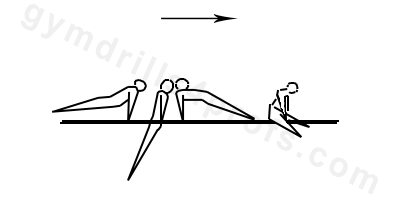
The gymnast should do small swings on the bars. In the front swing they should hop, lean their shoulders forward, open their legs, perform a half circle backward, and grab the bars in support. The gymnast should not touch the rails with any part of their body besides their hands.
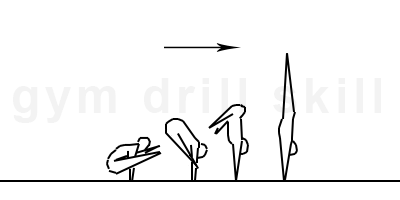
The gymnast should be in a straddle L-sit. They should slowly raise their hips, keeping the pike position until they open their shoulder angle completely. Next, they should raise their open legs further and close them to reach a handstand.
Integral part of gymnastics coaching process are skill drills. They help gymnasts to learn easier and technically correct. With GYM DRILL PRO you will find variety of ideas for the most the basic gymnastics skills. There are plenty of images with skill drill progressions. It is intended to support explicitly the qualified coaches in their daily coaching business. DO NOT practice without the guidance of proper professionals.